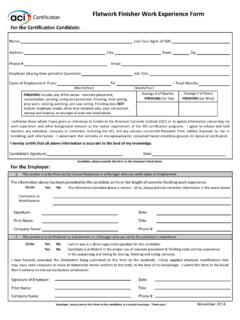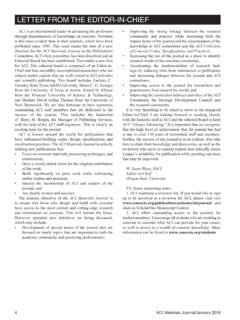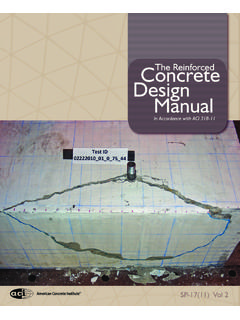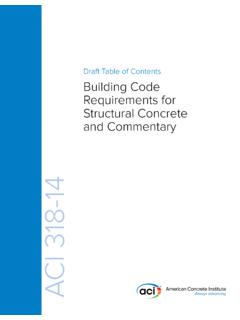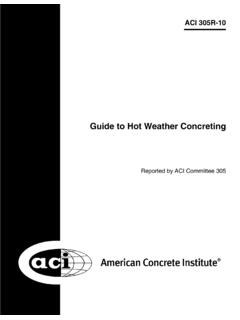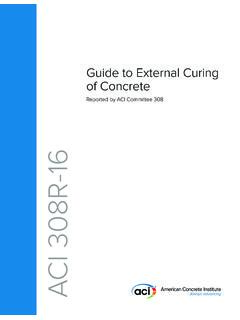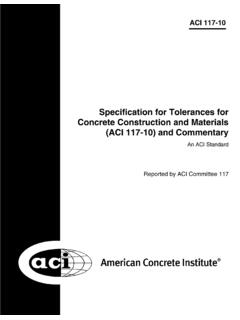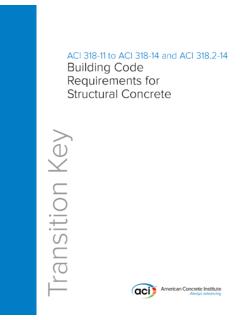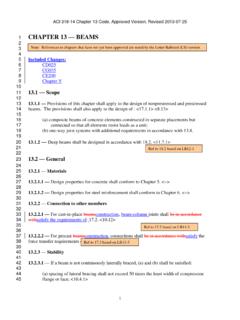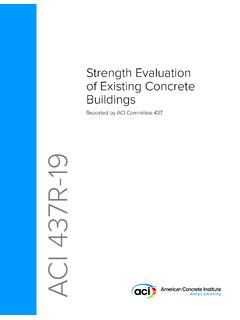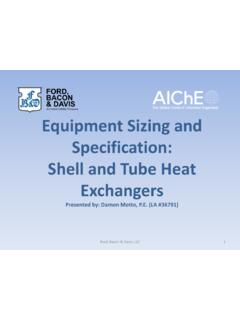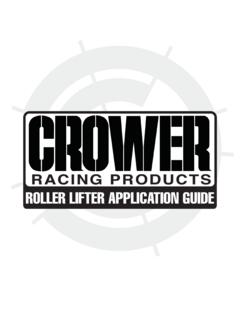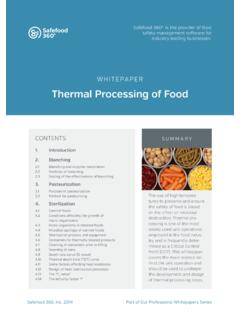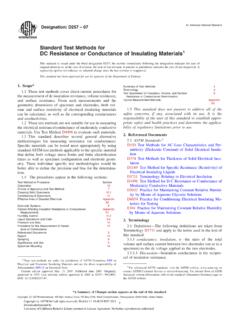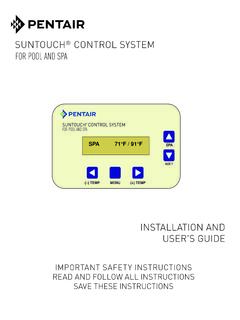Transcription of ACI 302.1R-15: Guide to Concrete Floor and Slab Construction
1 Guide to Concrete Floor and Slab ConstructionReported by ACI Committee 302 ACI PrintingJune 2015 ISBN: 978-1-942727-25-5 Guide to Concrete Floor and Slab ConstructionCopyright by the American Concrete Institute, Farmington Hills, MI. All rights reserved. This material may not be reproduced or copied, in whole or part, in any printed, mechanical, electronic, film, or other distribution and storage media, without the written consent of technical committees responsible for ACI committee reports and standards strive to avoid ambiguities, omissions, and errors in these documents. In spite of these efforts, the users of ACI documents occasionally find information or requirements that may be subject to more than one interpretation or may be incomplete or incorrect. Users who have suggestions for the improvement of ACI documents are requested to contact ACI via the errata website at Proper use of this document includes periodically checking for errata for the most up-to-date committee documents are intended for the use of individuals who are competent to evaluate the significance and limitations of its content and recommendations and who will accept responsibility for the application of the material it contains.
2 Individuals who use this publication in any way assume all risk and accept total responsibility for the application and use of this information in this publication is provided as is without warranty of any kind, either express or implied, including but not limited to, the implied warranties of merchantability, fitness for a particular purpose or and its members disclaim liability for damages of any kind, including any special, indirect, incidental, or consequential damages, including without limitation, lost revenues or lost profits, which may result from the use of this is the responsibility of the user of this document to establish health and safety practices appropriate to the specific circumstances involved with its use. ACI does not make any representations with regard to health and safety issues and the use of this document.
3 The user must determine the applicability of all regulatory limitations before applying the document and must comply with all applicable laws and regulations, including but not limited to, United States Occupational Safety and Health Administration (OSHA) health and safety by governmental representatives in the work of the American Concrete Institute and in the development of Institute standards does not constitute governmental endorsement of ACI or the standards that it information: ACI documents are available in print, by download, on CD-ROM, through electronic subscription, or reprint and may be obtained by contacting ACI standards and committee reports are gathered together in the annually revised ACI Manual of Concrete Practice (MCP).American Concrete Institute38800 Country Club DriveFarmington Hills, MI 48331 Phone: + : + quality of a Concrete Floor or slab is highly dependent on achieving a hard and durable surface that is flat, relatively free of cracks, and at the proper grade and elevation.
4 Properties of the surface are determined by the mixture proportions and the quality of the concreting and jointing operations. The timing of concreting operations especially finishing, jointing, and curing is critical. Failure to address this issue can contribute to undesirable char-acteristics in the wearing surface such as cracking, low resistance to wear, dusting, scaling, high or low spots, poor drainage, and increasing the potential for Floor slabs employing portland cement, regardless of slump, will start to experience a reduction in volume as soon as they are placed. This phenomenon will continue as long as any water, heat , or both, is being released to the surroundings. More-over, because the drying and cooling rates at the top and bottom of the slab are not the same, the shrinkage will vary throughout the depth, causing the as-cast shape to be distorted and reduced in Guide contains recommendations for controlling random cracking and edge curling caused by the Concrete s normal volume change.
5 Application of present technology permits only a reduc-tion in cracking and curling, not elimination. Even with the best Floor designs and proper Construction , it is unrealistic to expect completely crack- and curl-free floors. Consequently, every owner should be advised by both the designer and contractor that it is completely normal to expect some amount of cracking and curling on every project, and that such an occurrence does not necessarily reflect adversely on either the adequacy of the Floor s design or the quality of its Construction (Ytterberg 1987).This Guide describes how to produce high-quality Concrete slabs-on-ground and suspended floors for various classes of service. It emphasizes such aspects of Construction as site preparation, Concrete materials, Concrete mixture proportions, Concrete work-manship, joint Construction , load transfer across joints, form strip-ping procedures, finishing methods, and curing.
6 Flatness/levelness requirements and measurements are outlined. A thorough precon-struction meeting is critical to facilitate communication among key participants and to clearly establish expectations and procedures that will be employed during Construction to achieve the Floor qual-ities required by the project specifications. Adequate supervision and inspection are required for job operations, particularly those of : admixture; aggregate; consolidation; contract documents; curing; curling; deflection; durability; form; fracture; joint; mixture propor-tioning; placing; quality control; slab-on-ground; slabs; slump 1 INTRODUCTION, p. Purpose, p. Scope, p. 3 CHAPTER 2 DEFINITIONS, p. 3 CHAPTER 3 PREBID AND PRECONSTRUCTION MEETINGS, p. Prebid meeting, p. Preconstruction meeting, p. 3 Joseph F.
7 Neuber Jr., ChairPatrick J. Harrison, Vice ChairRussell E. Neudeck, SecretaryACI to Concrete Floor and Slab ConstructionReported by Committee 302 Dennis C. AhalBryan M. BirdwellPeter A. CraigAllen FaceC. Rick FelderEdward B. FinkelBarry E. ForemanGreg K. FricksTerry J. FricksJerry A. HollandPhilip S. KopfSteve R. Lloyd, A. MacDonaldArthur W. McKinneyDonald M. McPheeScott C. MetzgerJeffrey S. MillerScott L. NiemitaloNigel K. ParkesWilliam S. PhelanTim H. RobinsonJohn W. RohrerPaul A. Rouis, IIID omenick Thomas RutturaBruce A. SuprenantScott M. TarrConsulting MembersCarl Bimel*Michael A. ClarkWilliam C. PanareseBrian J. PashinaBoyd C. Ringo**DeceasedACI Committee Reports, Guides, and Commentaries are intended for guidance in planning, designing, executing, and inspecting Construction . This document is intended for the use of individuals who are competent to evaluate the significance and limitations of its content and recommendations and who will accept responsibility for the application of the informa-tion it contains.
8 ACI disclaims any and all responsibility for the stated principles. The Institute shall not be liable for any loss or damage arising there to this document shall not be made in contract documents. If items found in this document are desired by the Architect/ Engineer to be a part of the contract documents, they shall be restated in mandatory language for incorporation by the supersedes ACI and was adopted and published June 2015, American Concrete rights reserved including rights of reproduction and use in any form or by any means, including the making of copies by any photo process, or by electronic or mechanical device, printed, written, or oral, or recording for sound or visual reproduc-tion or for use in any knowledge or retrieval system or device, unless permission in writing is obtained from the copyright 4 CLASSES OF FLOORS, p.
9 Classification of floors, p. Single-course monolithic floors: Classes 1, 2, 4, 5, and 6, p. Two-course floors: Classes 3, 7, and 8, p. Class 9 floors, p. Special finish floors, p. 6 CHAPTER 5 DESIGN CONSIDERATIONS, p. Scope, p. Slabs-on-ground, p. Suspended slabs, p. Miscellaneous details, p. 13 CHAPTER 6 SITE PREPARATION AND PLACING ENVIRONMENT, p. Soil-support system preparation, p. Suspended slabs, p. Bulkheads, p. Setting screed guides, p. Installation of auxiliary materials, p. Concrete placement conditions, p. 16 CHAPTER 7 ASSOCIATED MATERIALS, p. Introduction, p. Reinforcement, p. Special-purpose aggregates, p. Monomolecular films, p. Curing materials, p. Gloss-imparting waxes, p. Liquid surface treatments, p. Joint materials, p. Volatile organic compounds (VOCs), p.
10 20 CHAPTER 8 Concrete MATERIALS AND MIXTURE PROPORTIONING, p. Introduction, p. Concrete , p. Concrete properties, p. Recommended Concrete mixture, p. Aggregates, p. Portland cement, p. Water, p. Admixtures, p. Concrete mixture analysis, p. 27 CHAPTER 9 BATCHING, MIXING, AND TRANSPORTING, p. Batching, p. Mixing, p. Transporting, p. 32 CHAPTER 10 PLACING, CONSOLIDATING, AND FINISHING, p. Placing operations, p. Tools for spreading, consolidating, and finishing, p. Spreading, consolidating, and finishing operations, p. Finishing Class 1, 2, and 3 floors, p. Finishing Class 4 and 5 floors, p. Finishing Class 6 floors and monolithic-surface treatments for wear resistance , p. Finishing Class 7 floors, p. Finishing Class 8 floors (two-course unbonded), p. Finishing Class 9 floors, p.
